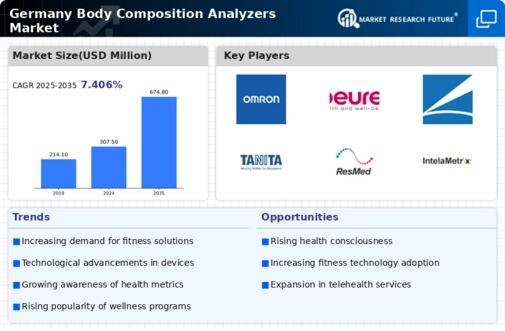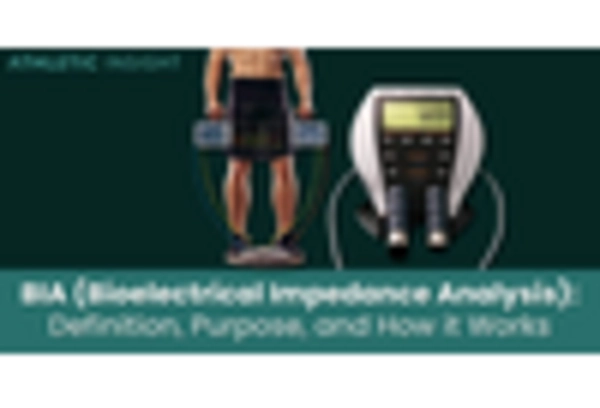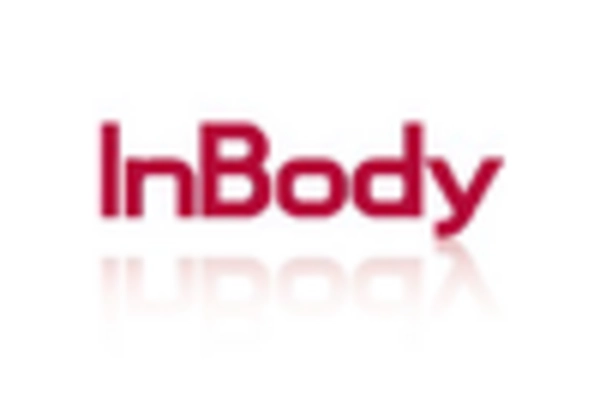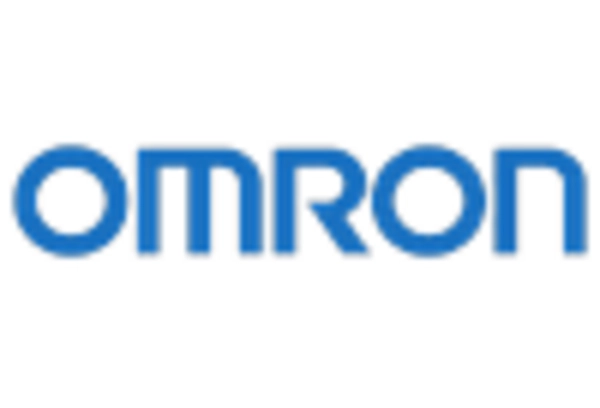Rising Obesity Rates
The rising rates of obesity in Germany are significantly impacting the body composition-analyzers market. As obesity becomes a pressing public health issue, there is an increasing need for effective monitoring tools that can help individuals manage their weight and overall health. According to recent statistics, approximately 25% of the German population is classified as obese, highlighting the urgent need for solutions that address this challenge. Body composition analyzers provide valuable insights into body fat percentage, muscle mass, and other critical metrics, enabling users to make informed decisions about their health. This growing concern over obesity is likely to drive demand for body composition analyzers, as more individuals seek to understand and improve their body composition.
Integration of Smart Technology
The integration of smart technology into health and fitness devices is significantly influencing the body composition-analyzers market in Germany. With the rise of the Internet of Things (IoT), consumers are increasingly drawn to devices that offer connectivity and data sharing capabilities. Smart body composition analyzers, which can sync with mobile applications and provide real-time feedback, are becoming more prevalent. This trend aligns with the broader digital transformation in healthcare, where data-driven insights are valued. In 2025, it is estimated that the smart health device market in Germany will exceed €3 billion, suggesting a strong potential for growth in the body composition-analyzers market as consumers seek innovative solutions that enhance their health management.
Increasing Demand for Fitness Solutions
The body composition-analyzers market in Germany is experiencing a notable surge in demand for fitness solutions. This trend is largely driven by a growing awareness of health and wellness among the population. As individuals increasingly prioritize fitness, the need for accurate body composition analysis becomes paramount. In 2025, the fitness industry in Germany is projected to reach approximately €6 billion, indicating a robust market for related technologies. Body composition analyzers play a crucial role in helping users track their progress and achieve fitness goals, thereby enhancing their overall health. This increasing demand for fitness solutions is likely to propel the growth of the body composition-analyzers market, as consumers seek reliable tools to monitor their health metrics effectively.
Government Initiatives for Health Promotion
Government initiatives aimed at promoting health and wellness are playing a pivotal role in shaping the body composition-analyzers market in Germany. Various public health campaigns encourage citizens to adopt healthier lifestyles, which in turn drives the demand for tools that facilitate health monitoring. For instance, the German government has invested in programs that focus on preventive healthcare, which includes promoting the use of body composition analyzers. These initiatives not only raise awareness but also provide funding for health-related technologies. As a result, the body composition-analyzers market is likely to benefit from increased visibility and accessibility, fostering a culture of health consciousness among the population.
Consumer Preference for Home Health Monitoring
The shift in consumer preference towards home health monitoring is significantly influencing the body composition-analyzers market in Germany. As individuals become more health-conscious, there is a growing trend of utilizing personal health devices at home. This preference is driven by the convenience and accessibility of monitoring one's health without the need for frequent visits to healthcare facilities. In 2025, the home health monitoring market in Germany is projected to grow substantially, indicating a favorable environment for body composition analyzers. Consumers are increasingly seeking devices that allow them to track their health metrics in real-time, which is likely to enhance the demand for body composition analyzers as part of a comprehensive home health management strategy.

















Leave a Comment